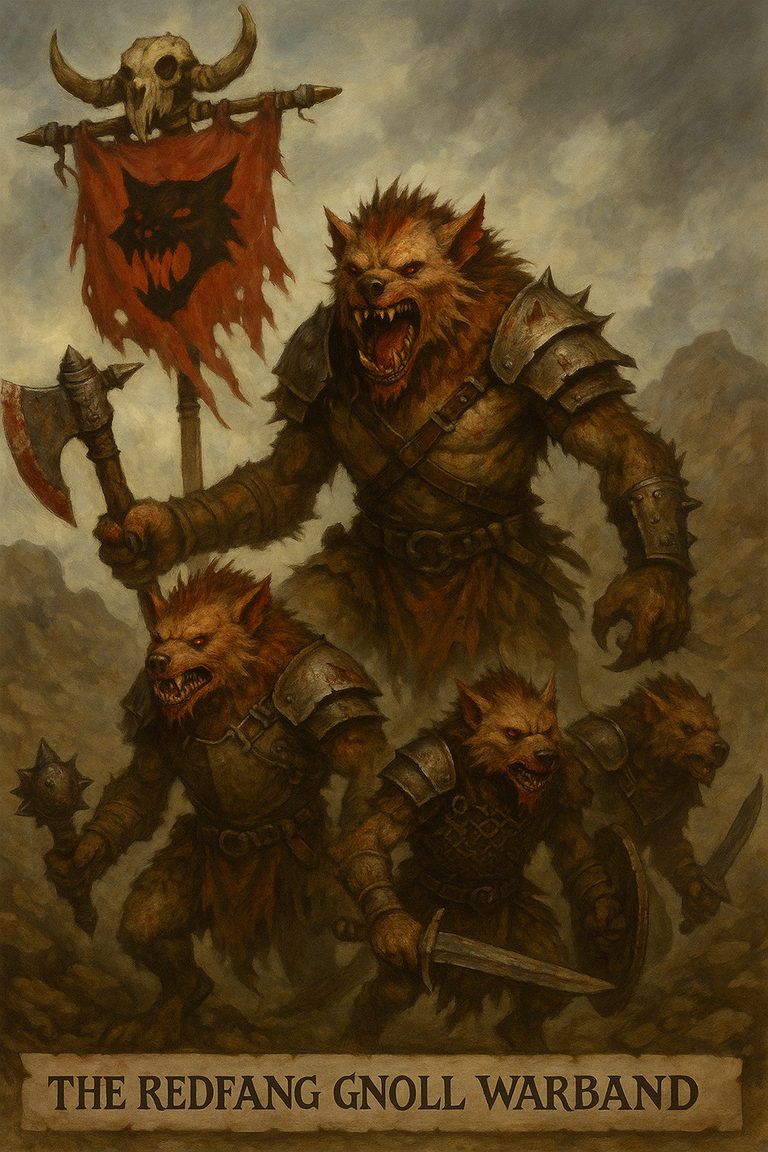GM Tips: Using "Fronts" to Create a Dynamic World
Hey everyone,
Today I want to talk about one of my favorite "lazy GM" tools, a concept I originally learned from the game Dungeon World but have since adapted for almost every game I run. It's called Fronts, and it's a brilliant way to organize your campaign's threats and make your game world feel truly dynamic and alive.
If you've ever felt trapped by a linear plot or frustrated when your players wander off in a completely unexpected direction, Fronts are for you.
What is a Front?
Instead of a rigid, pre-planned story, a Front is a collection of active dangers that are moving and making plans outside of the players' immediate actions. Think of them as the brewing storms on the horizon. A campaign usually has 2-3 active Fronts at a time.
A Front is made up of three simple parts: a Danger, Grim Portents, and Stakes Questions.
1. The Danger
This is the core threat. It could be a single villain, a whole organization, or even a cursed location. You give it a simple name and an Impulse, which is its core motivation.

- Danger: The Redfang Gnoll Warband
- Impulse: To pillage the countryside and grow its numbers.
2. Grim Portents
This is the heart of the system. Grim Portents are a short, escalating list of bad things that will happen if the players don't intervene. They are your "plot," written as a sequence of future events.
Following our Gnoll Warband example:
- Grim Portent 1: The gnolls raid outlying farmsteads, taking prisoners and supplies.
- Grim Portent 2: Emboldened by their success, the warband sacks a small, undefended village.
- Grim Portent 3: The warband's shaman performs a dark ritual, summoning demonic hyenas to bolster their forces.
- Grim Portent 4: The now-massive warband lays siege to the main city of the region.
When the players are busy with other quests, you can look at your Fronts and have one of these Grim Portents happen in the background. It creates a sense that the world is moving without them.
3. Stakes Questions
These are a few open-ended questions about the Front that you, the GM, don't know the answer to yet. They will be answered by the players' actions during the game.
- Will the party be able to rescue the prisoners from the gnoll camp?
- Can the city's militia hold out against the siege long enough for reinforcements?
- Who is the mysterious figure secretly supplying the gnolls with high-quality weapons?
Why This Works
The beauty of the Fronts system is that you're not planning a story from A to B to C. You're creating active threats with clear goals and then reacting to how your players choose to engage with them—or not. It frees you from rigid plot prep and makes it much easier to improvise, all while making your world feel more real and reactive than ever before.
As always,
Michael Garcia a.k.a. TheCrazyGM
I read it as "fonts" as first glance at the title and I was like... wait, what? How can fonts be used like that? 😄
🤣 I can totally see that!
Congratulations @thecrazygm! You have completed the following achievement on the Hive blockchain And have been rewarded with New badge(s)
Your next target is to reach 35000 upvotes.
You can view your badges on your board and compare yourself to others in the Ranking
If you no longer want to receive notifications, reply to this comment with the word
STOPI really like this idea, and gives me an idea for a programmatic real time game! 🤯
Let's roll dice one of these days.
!PAKX
!PIMP
!PIZZA
View or trade
PAKXtokens.Use !PAKX command if you hold enough balance to call for a @pakx vote on worthy posts! More details available on PAKX Blog.
I definitely use this same style of GMing, though I don't know that I've ever prescribed it a name beyond the vague mantra of "create problems, not solutions".
Like your system, I populate my world with various Actors that are just out there doing stuff, causing problems, making chaos. My current Campaign the players took the bait with the first problem I dropped in front of them, but in the background there are several other world events that I had plotted out as being viable options.
Now that we're already going down one rabbit-hole, I've folded in one of the other plots to become an active sub-plot to the campaign, but if they decided to just up and ignore this current threat to focus on something else... I could easily pivot because there is still at least one other Major Problem that's out there, and it wouldn't hurt the world at all for them to just abandon their current mission.
If anything, it'd let me have the bad guys win and in like 12 more sessions after abandoning this line, they'd have a brand new problem to deal with. 🤣
I like how this idea adds a more dynamic flow to a game, and I imagine that it makes it more fun indeed. I think that I'm going to learn GMing and coding by osmosis from reading your posts every day...lol! 😁 🙏 💚 ✨ 🤙
$PIZZA slices delivered:
@ecoinstant(1/20) tipped @thecrazygm
Come get MOONed!